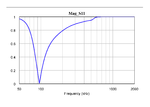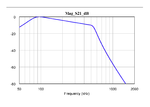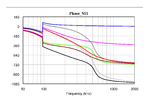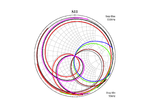niki
Member level 4
- Joined
- Feb 20, 2002
- Messages
- 70
- Helped
- 20
- Reputation
- 40
- Reaction score
- 20
- Trophy points
- 1,288
- Location
- Switzerland
- Activity points
- 418
8 networks have 8 different input signals but all output signals are identical!
(see attachement)
Some informations about the networks:
All networks can be realized with positive values of the elements
All networks have the same insertion loss (S21dB)
All networks have the same input return loss (S11dB)
All networks have the same output return loss (S22dB)
How is that possible?
What special requirements for the networks must be met?
Regards
Peter
(see attachement)
Some informations about the networks:
All networks can be realized with positive values of the elements
All networks have the same insertion loss (S21dB)
All networks have the same input return loss (S11dB)
All networks have the same output return loss (S22dB)
How is that possible?
What special requirements for the networks must be met?
Regards
Peter



